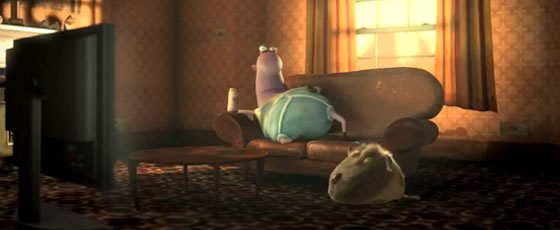For the last two posts, I brought up articles on animating in 3D similar to the way a 2D animator would do. One of the things that 2D animator do not have is the luxury of automatic inbetweens. Is that a blessing or a curse? I believe it's a blessing to a trained animator and people who has to produce quantity animation on deadlines. However, it should be used on the foundation of 2D animation, meaning, we shouldn't just set key poses and breakdowns, and then let the computer do all the inbetweens. Instead, we should think like a 2D animator - add in ALL the necessary drawings that are needed to make the animation flow the way the animator intended, and in step mode, only smoothing it when the stepped animation looks good enough on its own. The change from step to spline mode should also be made in parts, such as, the spine first, then the head, continue with the legs next and finally the arms. All other secondary animation are to be done after the main parts are finished, and do the facial animation last. Splining everything at once will create confusion and takes more time and effort to troubleshoot.
I found
Wal-Mart animation notes from Kyle Dunlevy who talked about his experience animating the commercials for Wal-Mart. Here's what he said:
#2. Step keys?

- I know lots of people animate on step keys. And I've heard it said many times that it's the best way to go. I have to admit, I am becoming a believer and that method worked well for me during this production. Here's the idea: Using step keys is the closest to the 2D method of animating. If you want to see a breakdown, you have to create it. When spline or linear keys are used, the computer creates its own breakdowns. Of course, we can always go back and adjust those breakdowns..BUT...and here's the thing; once we've seen those computer breakdowns, our brain has to work extra hard to decide what it should look like. Perhaps we are better off relying on ourselves to come up with, and understand each breakdown.
Kyle has also posted the
Robinhood animation notes which talks about his take on the animation process.
For those who are interested in knowing more about animation workflows, here's another one -
Puss in Boots by Justin.
















